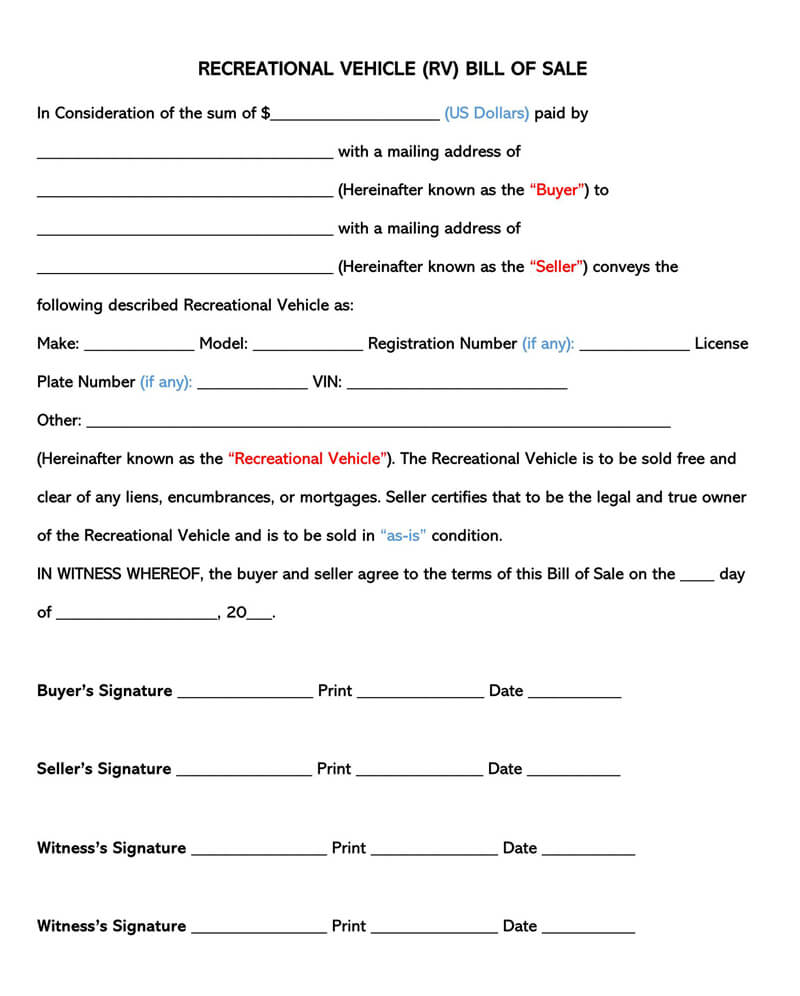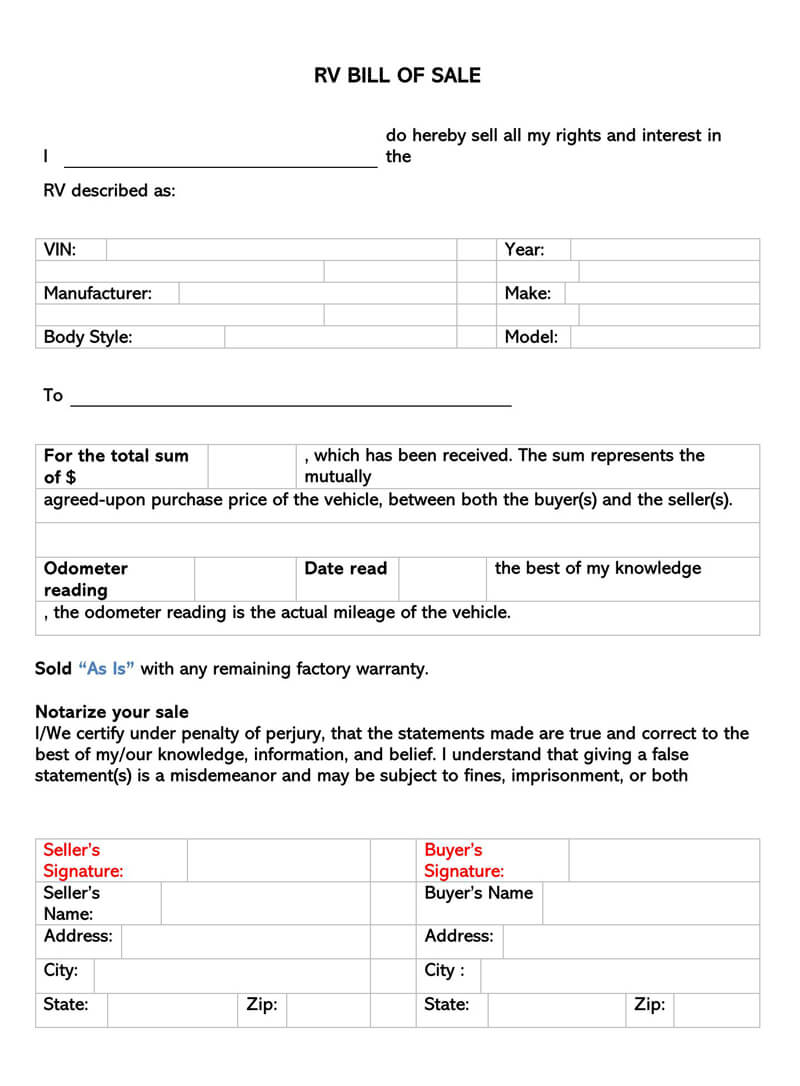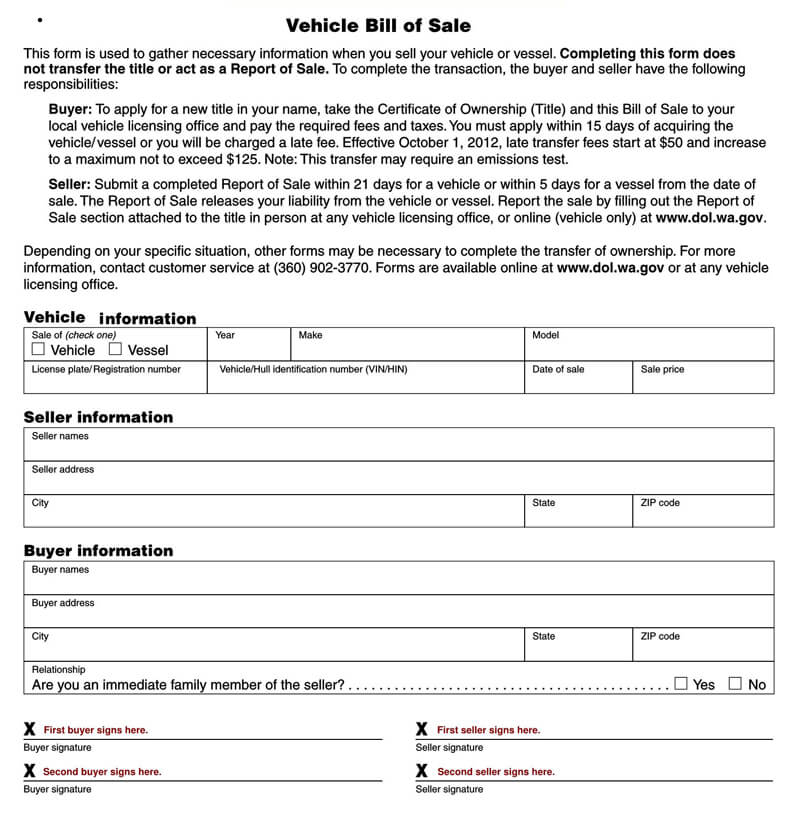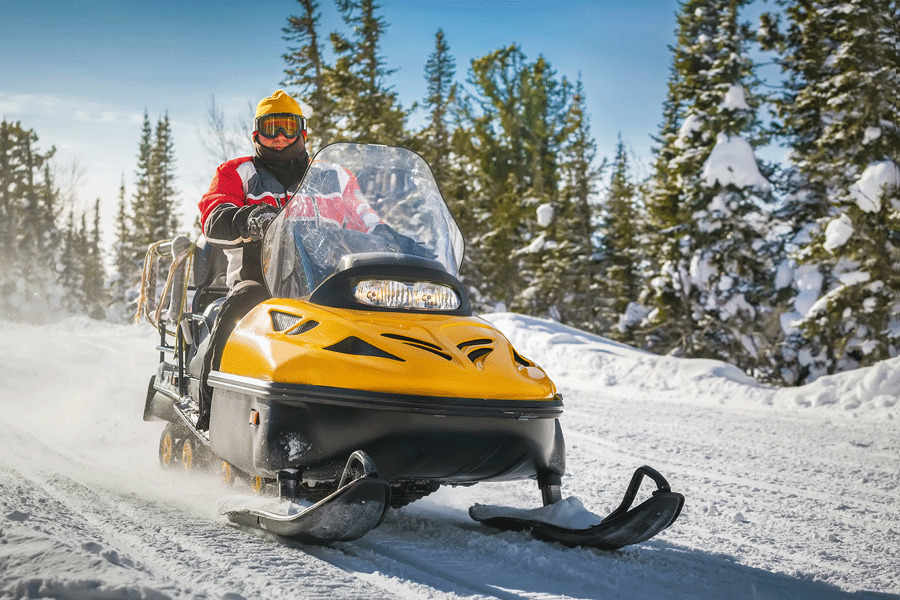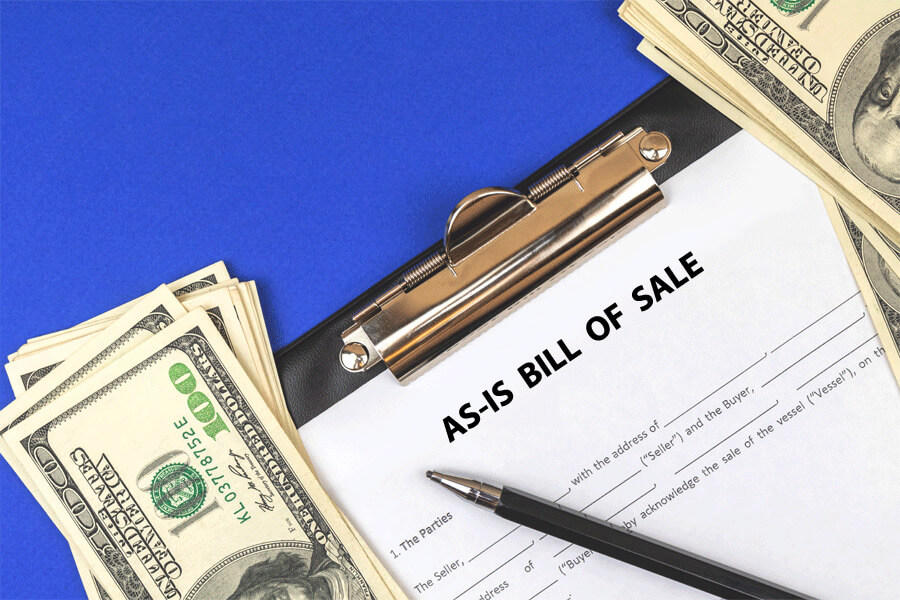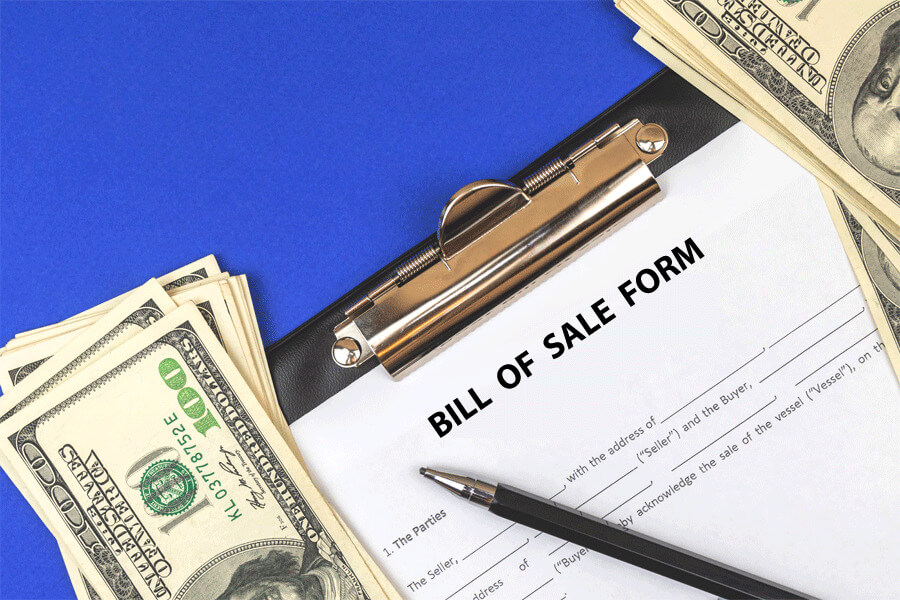A bill of sale is a form used to document the transfer of ownership of a recreational vehicle (RV) from a seller to a buyer.
It supplies the RV buyer with validation that they are the legal owner and can use the form to register their RV in the state that they reside in.
A recreational vehicle is one fitted with facilities that enable the vehicle to offer basic facilities found in a typical house. It’s abbreviated “RV.” Common types of recreational vehicles include campervans, motorhomes, truck campers, caravans, popup campers, and wheel trailers; RV’s can be self-motorized or trailers. Amenities found in an RV include a kitchen, a sleeping room, and a bathroom. RVs differ in complexity.
A typical RV will contain a sleeping area and a kitchen, while most complex RV’s will have luxurious features such as water hearts, air conditioning, satellite receptors, and television. Depending on your need and capacity, you can opt for a single deck or a double-deck RV.
Free RV Bill of Sale Forms
When Do I Need an RV Bill of Sale?
It is a legal proof that a transaction involving a recreational vehicle took place between a buyer and a seller. The document facilitates the transfer of ownership rights from the seller to the buyer.
Any moment you want to purchase a recreation vehicle from a seller, it is essential to use it to make sure you have a legal document for the asset.
Besides serving as an agreement that the buyer and the seller agreed to transfer an RV to the buyer, this document protects the interest of both parties. It shows the buyer agreed to pay a specified amount for the RV and to purchase the vehicle in its current state.
How to Fill RV Bill of Sale
When selling an RV, it is essential to have it to ensure that everything is legal. Knowing the key components to include in it is thus important. Below is a step-by-step guide on what to include and why and how to properly fill this form:
Step 1: Seller Information
When crafting the form, the seller must include a section where they provide their information. Information that goes into this section includes:
- The seller’s name: Full name of the seller should be included in the form. The name included should match the one used when registering the recreational vehicle
- The seller’s address: The seller’s address on the form should include their house number, street name, street type, and zone information such as their city, state, and ZIP Code.
- License Number: The license number is found on the driving license showing that the seller has been authorized to drive the vehicle and it must be specified on the bill of sale.
- Phone number: The seller should also provide their phone number together with an alternative phone number for the buyer, in case they have queries regarding the transaction or the RV if some reason, the seller’s main phone number provided is unavailable at the time.
- Email address: At times, the numbers provided may, after a while, seize to work, making it hard for the buyer to communicate with the seller. The seller should provide their email address in the form to help in proper correspondence in such a case.
Step 2: Buyer information
The form should include the buyer’s information. It should have a section for the buyer to input their information. Information captured in this section should include:
- Buyer’s name: The buyer’s name should be captured and it should be the same as is in their identification documents. The seller should check to ensure that the buyer is who they say they are.
- Address: The buyer should also provide their official address. The address can be used to trace them in case of any queries or used to deliver the RV’s documents that may be missed during the transaction.
- Email address and Phone number: The buyer’s phone number and a valid email address should also be included for communication regarding the recreational vehicle purchase.
Step 3: RV information
After filling in both the seller’s and buyer’s information, the next information to capture is the RV’s information. When filling in the RV’s information, the following must be captured:
- The date of signature: It is important to note that the RV form may have two different dates included in it, i.e., the date on which the form was drafted and the date on which the agreement was executed. It is important to include the exact date on which the form was executed, especially if you as the seller are offering some form of warranty on the RV to help keep track of the warranty period.
- The description of the recreational vehicle: It should have a clear description of the RV vehicle being sold. Under the description, the details of the following must be captured:
- The color of the RV
- Year of manufacturing
- Model of the RV
- Condition
- Make
- Type
- Fuel
- Mileage
- Drive
- Transmission
- Dimensions
- Cylinders
- Features and amenities
- And the VIN (vehicle registration number)
Step 4: Purchase details
The form must have a section to capture the purchase details. This information is important as it helps establish that the RV’s ownership was exchanged for the specified amount.
Under the purchase details section, the following should be captured:
- Purchase price: The total amount paid in exchange for the RV. The amount should be written numerically in dollars
- The date of the sale: The date on which the payment is made should be indicated to help the seller keep track of the form and payments made. The date is also important for record-keeping and tax filing purposes.
Step 5: Complete the transaction and sign the bill of sale
When both of the parties have agreed to have a deal, in order to complete the transaction:
Things the seller needs to bring
- Recreational vehicle
- Certificate of title
- Current/Past registration documents
Things the buyer needs to bring
- Payment- (the buyer can pay in the form of cash, check, certified check, cashier’s check, money order or ther verified payment method such as wire transaction)
Both the buyer and the seller must affix their signatures on the form to show that they acknowledge the transaction. It is recommended for both buyer and the seller to take a copy or photo of one another’s license to ensure the identity of each individual. By affixing their signatures, they also render the form admissible in court should any quarrels lead to litigations regarding the sale/purchase of the RV.
Under this section, the following should be included:
- The seller’s printed name and signature
- The buyer’s printed name and signature
- 1st Witness Printed name and signature
- 2nd Witness Printed name and signature
- Date of signing (date of execution)
note
The seller should only sign it after the buyer has made full payment for the RV.
Step 6: Certificate of acknowledgement
The last step when selling an RV is to have the document acknowledged by a notary public. Having it notarized by a notary public shows that both the seller and buyer have agreed to the terms of the sale and that they both acknowledge the transfer of ownership of the recreational vehicle before the notary public.
tip
If you are in the US, check with your county clerk for details to include in the bill of sale. The requirements in the document may vary from one state to another.
Before any party signs it, they must confirm to make sure the details in the document are correct. After signing the document, each party should get a copy. It will only be valid if both parties involved in the transaction have signed it.
Conclusion
There is always the risk that something might go wrong when selling a recreational vehicle. This is mainly true if one is selling a used vehicle that has a history of causing inconveniences attached to it. For the seller to adequately protect themselves and sell the recreational vehicle with ease, they must have a bill of sale in place. By following the steps listed above, we believe that one will be able to craft a great form to aid them when selling an RV.
